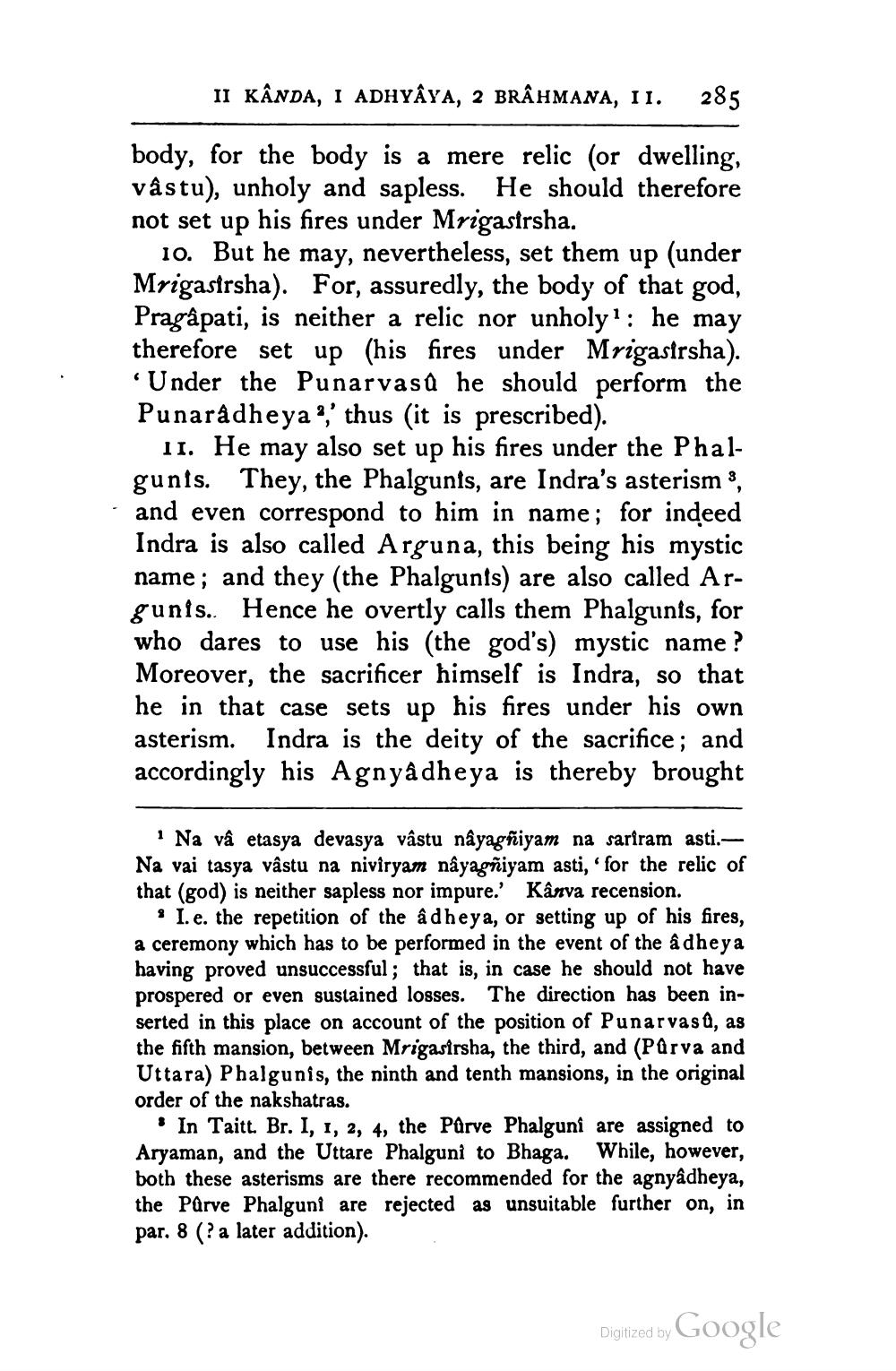________________
II KÂNDA, I ADHYAYA, 2 BRÂHMANA, 11.
285
body, for the body is a mere relic (or dwelling, vâstu), unholy and sapless. He should therefore not set up his fires under Mrigasirsha.
10. But he may, nevertheless, set them up (under Mrigastrsha). For, assuredly, the body of that god, Pragâpati, is neither a relic nor unholy: he may therefore set up (his fires under Mrigasirsha). Under the Punarvasở he should perform the Punaràdheya ?,' thus (it is prescribed).
11. He may also set up his fires under the Phalgunts. They, the Phalgunts, are Indra's asterisms, and even correspond to him in name; for indeed Indra is also called Arguna, this being his mystic name; and they (the Phalgunts) are also called Argunis. Hence he overtly calls them Phalgunis, for who dares to use his (the god's) mystic name? Moreover, the sacrificer himself is Indra, so that he in that case sets up his fires under his own asterism. Indra is the deity of the sacrifice; and accordingly his Agnyâdheya is thereby brought
Na vâ etasya devasya vâstu nâyagñiyam na sarfram asti.Na vai tasya vâstu na niviryam nâyagñiyam asti, for the relic of that (god) is neither sapless nor impure.' Kânva recension.
* I.e. the repetition of the adheya, or setting up of his fires, a ceremony which has to be performed in the event of the adheya having proved unsuccessful; that is, in case he should not have prospered or even sustained losses. The direction has been inserted in this place on account of the position of Punarvasů, as the fifth mansion, between Mrigasirsha, the third, and (Parva and Uttara) Phalgunis, the ninth and tenth mansions, in the original order of the nakshatras.
• In Taitt. Br. I, 1, 2, 4, the Pärve Phalgunî are assigned to Aryaman, and the Uttare Phalguni to Bhaga. While, however, both these asterisms are there recommended for the agnyâdheya, the Pärve Phalguni are rejected as unsuitable further on, in par. 8 (? a later addition).
Digitized by Google




